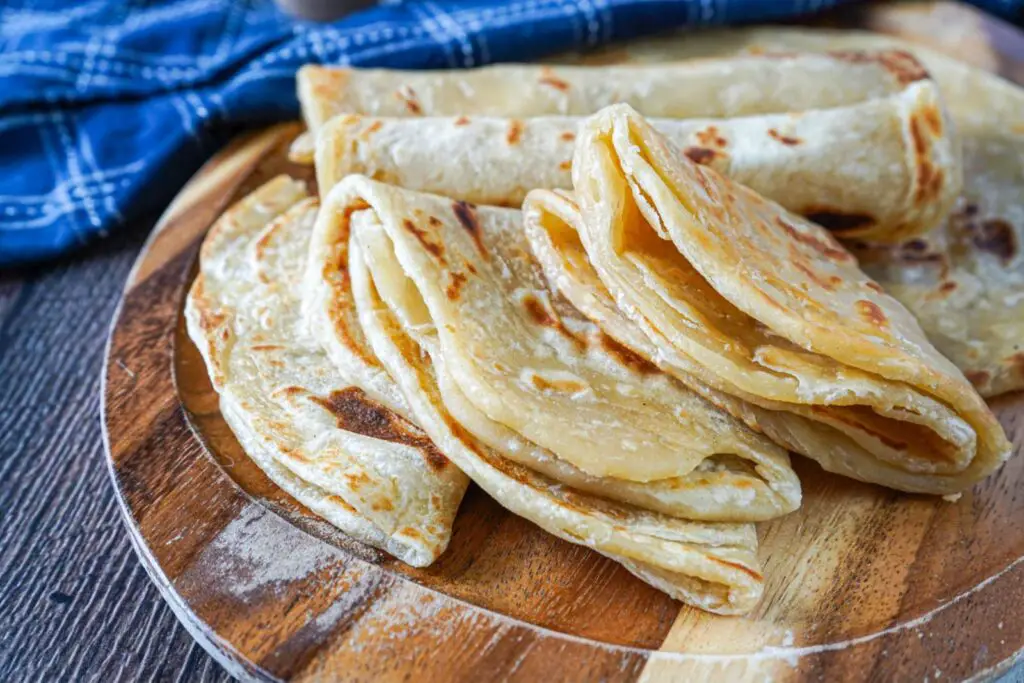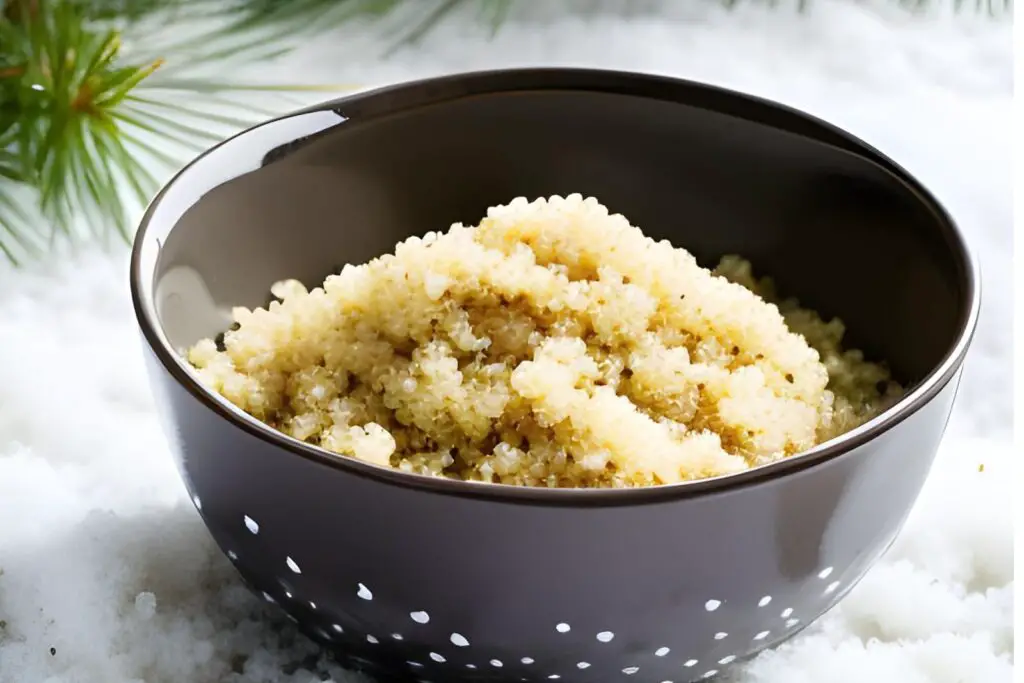
Fruit pies, the epitome of delectable desserts, present a harmonious blend of flaky crusts and luscious fillings that embody the essence of seasonal bounty and sweet indulgence. From the classic apple pie to the tangy flavors of berry pies and the tropical charm of citrus-based creations, fruit pies celebrate the vibrant colors and flavors of nature’s offerings. These irresistible confections hold a special place in culinary traditions, gracing tables during holidays, family gatherings, and cherished occasions. However, when baking or receiving multiple fruit pies, it can be challenging to enjoy them all before their freshness wanes.
Freezing fruit pies emerges as a practical and efficient method to preserve their delightful taste and satisfying textures, ensuring that each slice captures the essence of a homemade delight, ready to elevate your moments with the essence of perfectly frozen fruit pies, even when freshly baked pies aren’t readily available or when you yearn for the comfort of these flavorful desserts at your convenience. In this guide, we will delve into the best practices for freezing fruit pies, allowing you to savor the richness of these seasonal treats and elevate your dessert game with the essence of perfectly frozen fruit pies, without the need for continuous baking endeavors or the limitation of seasonal availability.
Here are the simple steps to freeze fruit pies:
Step 1: Choose your Fruit Pies
When embarking on the process of freezing fruit pies, the first step involves selecting the specific pies that you intend to preserve for future enjoyment. These pies can encompass a wide array of flavors, from classic apple and cherry to exotic options like blueberry and peach. Whether you’ve lovingly baked these pies in your own kitchen or have acquired them from a local bakery, it’s important to choose pies that are at their peak freshness.
Homemade pies crafted with care can hold a special sentimental value, making them particularly appealing candidates for freezing. Alternatively, if you’re short on time or baking prowess, store-bought fruit pies can provide a convenient and equally delectable option for freezing. Regardless of their origin, the key criterion is their quality and freshness.
A critical consideration during this selection phase is ensuring that the chosen fruit pies have not been left at room temperature for an extended duration. Pies that have been sitting out for too long can become susceptible to bacterial growth and degradation in taste and texture. To maintain the optimal quality of the pies during freezing, it’s advisable to freeze them as soon as possible after baking or purchase.
Step 2: Cool the Pies
After you’ve selected the fruit pies that you plan to freeze, it’s crucial to allow them to cool down completely before proceeding with the freezing process. This step is pivotal in maintaining the pies’ quality and preventing potential issues such as freezer burn.
Cooling the pies involves letting them reach room temperature naturally after they’ve been baked or purchased. During the baking process, the heat causes moisture within the pie to evaporate, creating steam that can get trapped inside the pie’s interior. Allowing the pies to cool ensures that this internal steam is released, helping to prevent excess moisture from accumulating within the pie.
One of the primary reasons for cooling the pies before freezing is to thwart the formation of condensation inside the packaging. If the pies are still warm when wrapped and placed in the freezer, the temperature difference between the warm pies and the cold freezer can cause moisture to form on the surface of the pies. Over time, this moisture can freeze and create icy crystals on the pie’s surface, leading to freezer burn.
Freezer burn is a condition that affects frozen foods when moisture within the food is drawn to the surface and freezes. It can result in a dry and discolored appearance, as well as alterations in taste and texture. By allowing the pies to cool completely, you reduce the likelihood of excess moisture forming and subsequently freezing, thus mitigating the risk of freezer burn.
To ensure that your fruit pies are in optimal condition for freezing, it’s recommended to let them cool on a wire rack or a clean countertop until they reach room temperature. This cooling period may vary depending on the size and type of pie but generally takes around 1 to 2 hours. Once the pies have cooled down, they are ready to be wrapped and prepared for freezing, ensuring that their flavor, texture, and overall quality are preserved throughout their time in the freezer.
Step 3: Wrap the Pies
With your fruit pies now cooled to room temperature, the next crucial step in the freezing process involves wrapping each pie individually. This protective layer serves as a barrier against moisture and air, safeguarding the pies from freezer burn and helping to maintain their delectable flavors and textures during their time in the freezer.
You have a choice between two common materials for wrapping the pies: plastic wrap and aluminum foil. Both options offer effective protection, but each has its own benefits.
- Plastic Wrap:
Plastic wrap is a transparent and flexible material that clings tightly to the surface of the pie. When using plastic wrap, ensure that the entire surface of the pie is covered, leaving no exposed areas. Press the wrap gently against the pie to create a snug seal. This seal not only prevents moisture from forming on the pie’s surface but also prevents air from getting in, which can lead to freezer burn.
- Aluminum Foil:
Aluminum foil is a sturdy and versatile option for wrapping pies. It provides a thicker layer of protection and shields the pies from external elements. To wrap a pie in aluminum foil, place the pie in the center of a sheet of foil and fold the edges over the pie, creating a secure and airtight seal. Similar to plastic wrap, ensure that the pie is fully covered to prevent any potential moisture infiltration.
The wrapping process is essential for preventing freezer burn. Freezer burn occurs when moisture within the food sublimates (transforms from ice to water vapor) and then re-freezes on the food’s surface. This process can result in the loss of moisture, changes in flavor, and a compromised texture. By wrapping the pies individually, you create a barrier that reduces the exposure of the pies to air and moisture, significantly reducing the risk of freezer burn.
Step 4: Place in a Resealable Bag
After individually wrapping each fruit pie to provide a protective layer against freezer burn, the next step involves transferring the wrapped pies to a resealable plastic freezer bag. This additional layer of packaging enhances the insulation and protection of the pies, helping to maintain their quality and taste throughout their time in the freezer.
- Resealable Plastic Freezer Bag:
Select a resealable plastic freezer bag that is appropriate in size to accommodate the wrapped pies. These bags are designed to withstand freezing temperatures and are more durable than regular plastic bags. They also have a zip-top closure that can be easily opened and closed multiple times without compromising the seal.
- Removing Air:
As you place the wrapped pies inside the freezer bag, it’s important to minimize the amount of air trapped inside. Air can lead to the formation of ice crystals and moisture, both of which can negatively impact the quality of the pies. To remove excess air, gently press down on the bag as you seal it, pushing out any air pockets. This step helps create a snug fit around the pies, reducing the risk of freezer burn.
- Vacuum-Sealed Bags:
For even more effective protection, you can opt for vacuum-sealed bags. These specialized bags are designed to remove nearly all the air from the packaging, significantly reducing the chances of freezer burn. Vacuum-sealed bags are sealed using a vacuum sealer machine, which removes the air and tightly seals the bag shut. This method is particularly useful if you plan to store the pies for an extended period.
By placing the wrapped pies in a resealable plastic freezer bag or using vacuum-sealed bags, you’re adding an extra layer of defense against freezer burn and moisture infiltration. This dual-layered packaging approach ensures that the pies remain well-preserved and maintain their original taste and texture. When properly stored in these protective bags, your frozen fruit pies will be ready to enjoy whenever you decide to indulge in a slice of delectable goodness.
Step 5: Label and Date
After placing the individually wrapped and packaged fruit pies inside resealable plastic freezer bags or vacuum-sealed bags, the next essential step involves labeling and dating each bag. This practice may seem simple, but it plays a crucial role in ensuring that you can effectively manage your frozen fruit pie inventory and consume them at their best quality.
- Labeling:
Using a waterproof marker or adhesive labels, clearly write the type of pie and any other relevant information on each bag. This information can include the fruit variety (e.g., apple, cherry, blueberry), any specific flavors or additions (e.g., spiced, crumb-topped), and any dietary considerations (e.g., vegan, gluten-free).
- Dating:
Alongside the pie’s description, prominently display the date on which the pies were frozen. This date is important for tracking how long the pies have been in the freezer. Most frozen foods have a recommended storage duration to ensure optimal quality. By dating the packages, you’ll have a quick reference to determine if a particular pie is still within its prime consumption window.
Maintaining clear and accurate labels helps you avoid any guesswork when it comes to selecting a pie to thaw and enjoy. It also ensures that you can make informed decisions about which pies to consume first based on their freezing dates.
- Rotating Inventory:
By practicing proper labeling and dating, you can implement a “first in, first out” approach to consuming your frozen pies. This means using the oldest pies before moving on to more recently frozen ones. This rotation prevents pies from staying in the freezer for too long and potentially losing their quality over time.
- Customization:
If you plan to store various types of fruit pies, having labeled and dated packages allows you to tailor your dessert selection to your cravings. For example, if you’re in the mood for apple pie, you can quickly locate and retrieve the appropriate package without needing to defrost multiple pies.
Overall, this labeling and dating step serves as a practical and efficient method to keep track of your frozen fruit pies, ensuring that you can enjoy them at their peak taste and texture while minimizing any waste or deterioration.
Step 6: Arrange in the Freezer
As you proceed with freezing your carefully wrapped and labeled fruit pies, it’s essential to consider how you arrange them within the freezer. The manner in which you position the pies can impact the freezing process, as well as the overall organization and accessibility of your frozen pie collection.
- Laying Pies Flat:
When placing the wrapped and sealed fruit pies inside the freezer, it’s recommended to lay them flat. This positioning has several benefits. First, laying the pies flat helps ensure even and consistent freezing. The pies’ contents will freeze uniformly, preserving their taste and texture throughout.
- Maximizing Space:
Laying the pies flat also allows you to make the most efficient use of your freezer space. By stacking the pies horizontally, you can fit more pies in a single layer, optimizing the available freezer area. This approach is particularly useful if you have limited freezer space or if you plan to store a variety of frozen foods alongside your fruit pies.
- Ease of Retrieval:
Additionally, arranging the pies flat makes it easier to retrieve individual pies from the freezer without disrupting the others. You can slide out a single pie package without having to rearrange the surrounding items, ensuring that you can enjoy the pie of your choice without any hassle.
- Preventing Stickiness:
Laying the pies flat also prevents them from sticking together or becoming entangled. If pies are stacked on top of one another, there’s a risk of the packaging materials adhering to each other as they freeze. Keeping the pies separate on a flat surface eliminates this concern.
Step 7: Maintain a Consistent Temperature
Once your wrapped and labeled fruit pies are arranged in the freezer, it’s imperative to focus on maintaining a consistent temperature within the freezing environment. The temperature at which you store your frozen pies can greatly influence their overall quality and longevity.
- Ideal Freezer Temperature:
The recommended temperature for storing frozen foods, including fruit pies, is around 0°F (-18°C) or lower. This temperature range ensures that the pies freeze thoroughly and remain at a temperature that inhibits bacterial growth and enzymatic reactions. These factors contribute to preserving the pies’ flavor, texture, and overall quality over an extended period.
- Impact of Temperature Fluctuations:
Fluctuations in temperature can have detrimental effects on the frozen pies. When the freezer temperature rises even slightly above the ideal range, it can cause partial thawing and refreezing of the pies. This process can lead to changes in texture, the formation of ice crystals, and a loss of moisture, all of which can compromise the pies’ taste and appeal.
- Temperature Monitoring:
To maintain consistent freezer temperature, it’s advisable to use a thermometer to periodically check the temperature settings. Modern freezers often come equipped with built-in temperature displays, making it easier to monitor and adjust as needed. If your freezer lacks this feature, placing a thermometer inside can provide accurate readings.
- Avoid Overloading:
Another factor that can affect freezer temperature stability is overloading the freezer with a large quantity of warm items at once. This can cause the temperature to rise temporarily. If you’re planning to freeze multiple pies or other items, it’s a good idea to do so gradually, allowing the freezer to regain its desired temperature between additions.
Step 8: Thaw and Reheat
As the time comes to savor the deliciousness of your frozen fruit pies, it’s important to follow a thoughtful thawing and reheating process to ensure that the pies regain their mouthwatering flavors and satisfying textures.
- Thawing in the Refrigerator:
To thaw a frozen fruit pie, begin by removing it from the freezer. Place the pie, still in its packaging, in the refrigerator. Thawing the pie in the refrigerator is a gradual and controlled process that helps prevent any drastic changes in temperature that could compromise the pie’s quality. Depending on the size and type of pie, it typically takes several hours to thaw, or even overnight. Allow enough time for the pie to thaw thoroughly.
- Avoid Rapid Thawing:
Avoid using methods like microwave thawing or leaving the pie at room temperature for swift thawing. Rapid thawing can lead to uneven texture and moisture accumulation, which could impact the pie’s taste and structure.
- Reheating for Optimal Enjoyment:
Once the pie is fully thawed, you can consider reheating it to restore its warmth and crispness. Preheat your oven to a low temperature, around 325°F (163°C). This gentle reheating approach prevents the pie from becoming overly browned or drying out. If you’ve used a pre-baked crust, it will regain its crispy texture, enhancing the overall pie experience.
- Reheating Duration:
The reheating time varies depending on the size of the pie and the specific oven. Generally, it takes about 10 to 20 minutes for a single slice-sized portion and up to 30 minutes or more for a whole pie. Keep a watchful eye on the pie while it reheats to avoid overcooking.
- Consider Covering:
To prevent the crust from becoming too browned during reheating, you can cover the pie with aluminum foil for the first portion of the reheating process. This shield helps evenly distribute the heat and prevents the crust from becoming overly crispy.
Other related questions
How long can fruit pies last in the freezer?
Fruit pies can last in the freezer for approximately 2 to 4 months without significant loss of quality. Properly wrapped and stored at a consistent temperature of 0°F (-18°C) or lower, they can remain safe to eat for up to 6 months, but flavors and textures might degrade over time. Adhering to optimal freezing and storage practices ensures optimal preservation.
Can you refreeze fruit pies?
Refreezing fruit pies is not recommended due to potential quality loss. Once thawed, pies undergo moisture changes affecting texture and taste. Refreezing can amplify these issues.
How do I know if the fruit pies have gone bad after being frozen?
Signs of a frozen fruit pie gone bad include freezer burn, noticeable texture changes, off-putting odors, and flavor deterioration. Crystallized ice or discoloration on the surface indicate freezer burn. Unpleasant smells and mushy textures suggest spoilage.
Can I freeze a fruit pie that has a custard or cream-based filling?
Freezing fruit pies with custard or cream-based fillings is possible, but caution is needed. Cream fillings may separate upon thawing, affecting texture. Pre-freezing and reheating gently helps preserve taste, but expect some textural changes.
Can I freeze fruit pies containing fresh vs. canned fruits differently?
Yes, freezing fruit pies with fresh or canned fruits differs slightly. Fresh fruit pies may require blanching or pre-cooking to preserve texture. Canned fruit pies have softer fruits; adjust sugar and thickening agents. Both benefit from proper wrapping to prevent freezer burn.
Should I apply egg wash before freezing a fruit pie?
Applying egg wash before freezing a fruit pie is not recommended. Egg wash can affect texture and create sogginess during freezing and thawing. For better results, freeze pies without egg wash, then apply it before baking for a golden finish.








